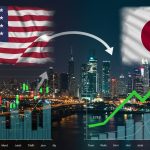In the face of widespread market pessimism, one Wall Street strategist maintains strong confidence in Trump tariff negotiation prospects, suggesting current market fears may be overblown. While competitors slash forecasts amid tariff concerns, this contrarian view sees opportunity in the current volatility.
Trump Tariff Negotiation Prospects Point to Eventual Policy Moderation
“We still firmly believe that these levies will eventually be negotiated lower,” BMO Capital Markets chief investment strategist Brian Belski wrote in a note to clients while maintaining a 6,700 year-end target for the S&P 500 (^GSPC). This bullish outlook represents a potential 37% rally from current levels, standing in stark contrast to increasingly cautious projections from other major firms.
The optimistic stance on Trump tariff negotiation prospects comes as other strategists retreat from earlier bullish positions. Bank of America recently joined Oppenheimer, JPMorgan, Goldman Sachs, RBC Capital Markets, Barclays, Evercore ISI, and Yardeni Research in lowering year-end S&P 500 forecasts. Most now project the index will finish 2025 below its starting point of approximately 5,900.
Market Reaction to Trump Tariff Policies
The widespread forecast revisions stem from concerns that Trump’s extensive tariff proposals could simultaneously slow economic growth and accelerate inflation. JPMorgan’s economics team now predicts a recession in late 2025, while Goldman Sachs has increased its 12-month recession probability from 35% to 45%.
However, Belski’s view on Trump tariff negotiation prospects is partially based on political self-interest. “We have always subscribed to the simple viewpoint that the market leads the economy,” Belski noted. “So, we find it very difficult to believe that any President, let alone President Trump, would want to be viewed as being solely responsible for pushing the economy into a recession.”
Historical Data Supports Rally Potential
Following the S&P 500’s dramatic 11% two-day decline last week, Belski examined similar historical selloffs. His analysis of forward 12-month returns following two-day drops exceeding 10% revealed that while markets typically fall about 14% during such events, they subsequently average returns exceeding 36% over the next year.
“Unless it is going to be ‘different this time,’ the market is likely to rebound sharply from the latest levels and deliver quite impressive returns over the next year,” Belski wrote, reinforcing his optimism about Trump tariff negotiation prospects.
Sector Preferences Amid Market Turbulence
Despite the recent market turbulence, Belski maintains an Overweight rating on Consumer Discretionary (XLY), Financials (XLF), and Information Technology (XLK) sectors. Notably, these sectors have underperformed during the recent drawdown, each declining approximately 11% or more compared to the S&P 500’s 10.8% drop.
Trump’s Current Stance and Market Response
In the short term, evidence of the softening in Trump tariff negotiation prospects that Belski anticipates has yet to materialize. Trump’s Sunday night comment that “I don’t want anything to go down, but sometimes you have to take medicine to fix something” has reinforced market concerns rather than alleviating them.
This persistence has led some analysts to suggest investors should accept tariffs as a permanent feature rather than a negotiating tactic. “So, you either think tariffs are a means to an end or an end in and of themselves. The sooner everyone realizes that is probably the latter, the sooner we can start talking about getting back into the market,” noted Neil Dutta, Renaissance Macro’s head of economic research.
Morgan Stanley’s chief investment officer Mike Wilson warned investors to prepare for potentially 7-8% additional downside from Friday’s close without clear signals of a less severe trade environment or Federal Reserve intervention.
However, for investors who share Belski’s view on Trump tariff negotiation prospects, the current market weakness may represent a buying opportunity rather than a reason to retreat.



